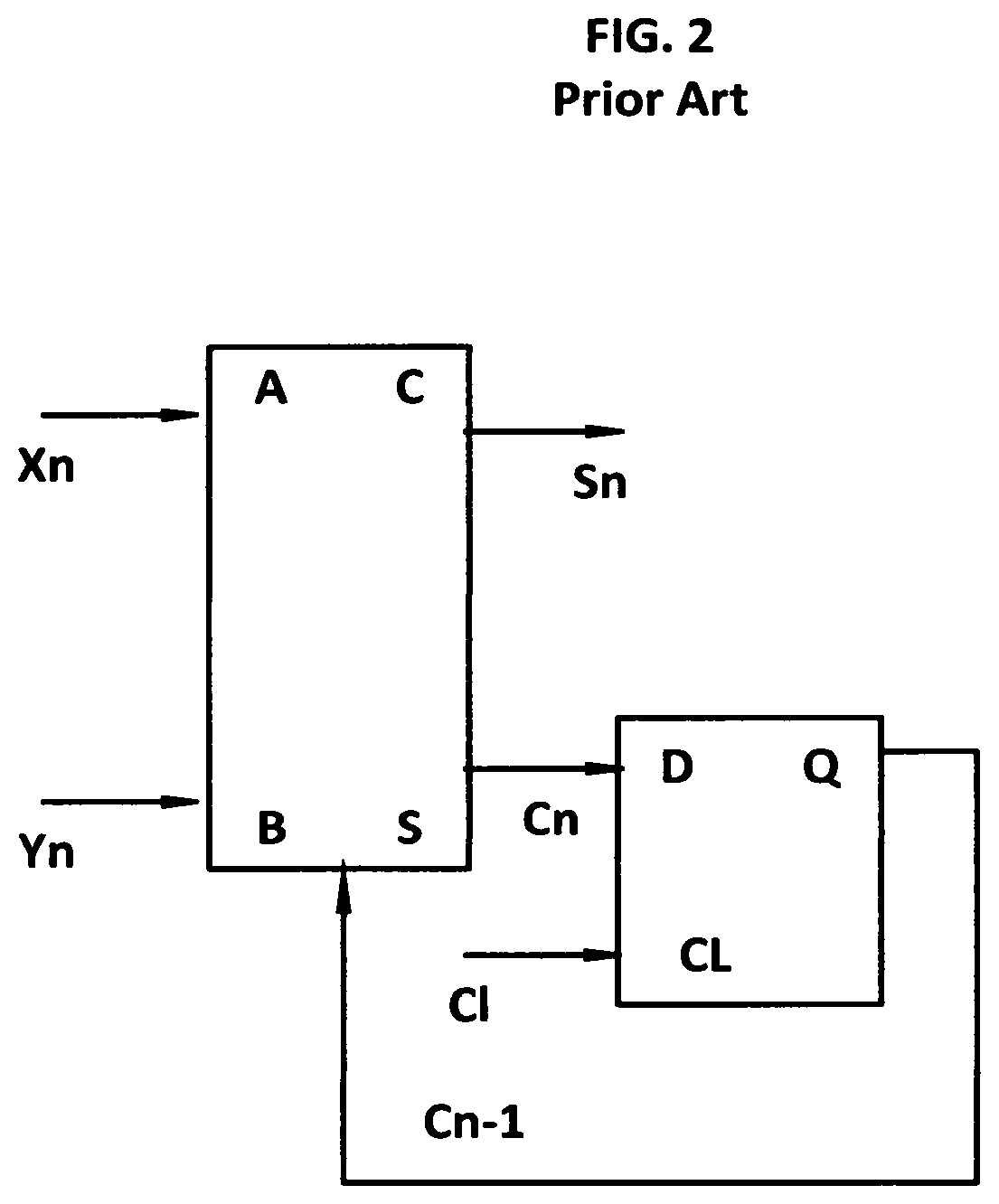Unfortunately, it requires several external analog components to make it operate (including two
inductor (coil) components).
Thus, FM IC chips have to be buffered by a number of analog components which is not possible to integrate.
1. Tatsuta et al discloses a
wireless transmission system for wirelessly connecting
signal source apparatus and
signal sink apparatus (U.S.
patent application Ser. No. 12 / 0888,832). From the proposed apparatus in FIG. 1, it is possible to see that a
signal source is a
DVD player, and a signal sink is a PDP apparatus. In FIG. 2 and in FIG. 3, a block diagrams are marked, but without any explanation how they operate, or how they are implemented. From the description and from the block diagrams it is not possible to resolve what kind of digital modulation technique is used for digital
multiplexing:
pulse code modulation (PCM), differential code modulation (DPCM),
delta-sigma modulation (DSM) etc. Thus, from the description and from the
block diagram, it is not possible to resolve how many bits per sample of video or
audio signal is used (8-bit PCM, 16-bit PCM, etc.). From claims 19 to 34 it is possible to conclude that 2 channel
wireless apparatus is proposed without mentioning delta-sigma modulation (DSM), arithmetic operations on delta-modulated bit-
stream, or delta-sigma based stereo technique.
2. Kamiya disclosed mixing, coding and decoding devices and methods which the operation is based on mixed use of delta-sigma and
pulse code modulation (U.S.
patent application Ser. No. 08 / 864,552). From the proposed FIG. 1 one can see enormous complexity of the proposed
digital signal processing circuitry. To avoid conversion of the data into analog domain, Kamiya proposes to mix 16-bit PCM signal and one-bit DSM bit-
stream. However, this approach has some disadvantages.
Second, weighted 16-bit multipliers are bulky and slow (usually multiplication is done on the shift-and-add principle).
Third, PCM adder (No. 13, in FIG. 1) is very complex. It adds four 16-bit PCM words and produces 17-bit word.
Fourth, delta-sigma modulator (13), introduces additional quantization
noise. It is important to mention that every one of those elements introduce additional
noise into proposed
system shown in FIG. 1. One can conclude, that the price and complexity of mixed “full-digital
processing” (to avoid conversion of data into analog domain) is too big. Having a 16-bit word, one can expect the problem of reliability, because the most frequent malfunction happens at connection of
metal wire and
semiconductor (16 parallel wires / word)! Even though delta-sigma modulator is used as the ADC of the
analog signal, entire DSP
processing is done with 16-bit PCM
code word, and at the output again converted into serial bit-
stream using delta-sigma modulator.
3. Algazi et al proposed a new approach for tracking a head motion of headphone-based sound (U.S.
patent application Ser. No. 11 / 845,607). In FIG. 1, of this invention, the basic concept of the invention is presented. It consists of
microphone array,
signal processing unit, and head tracker. From existing block diagrams and flow charts, it is impossible to conclude what kind of signal processor is employed. One cannot find data about the analog-to-digital convertor used and its resolution (a number of bits per sample), or any implementation solution. Without implementation schematics, measurement, or
simulation results it is very difficult to judge the validity of the general concept proposed, or contrast and compare it with the existing solutions.
4. McArthur et al presented a
wireless digital audio system which includes a
transmitter that performs parallel acquisition of audio data from plural audio data. A set of Codecs convert the incoming multi-channel
analog signal to serial digital bit stream. If a
digital audio input signal is used, the Codecs can be bypassed. FIG. 3 of this invention (U.S. patent application Ser. No. 11 / 499,126) clearly presents radio
transmitter including a timing marker for the packetization of parallel collected data. RF packet
data stream is transmitted to the
receiver (shown in FIG. 4 of this invention) which includes a
timer unit responsive to receive a timing marker and a
clock for synchronization and demultiplexing. In FIG. 5A and FIG. 5B one can see the complexity of the proposed wireless
radio system. In addition to standard blocks, the
transmitter consists of
forward error correction block (FEC) and packet buffer block. The
receiver has additional blocks for processing redundant and prior data. From block diagrams and from description it is not possible to conclude what kind of CODEC is used (PCM or Δ-Σ). In addition, direct processing of Δ-Σ bit stream is not mentioned at all.
It will be very difficult, if not impossible, to combine the techniques of Tatsuta, Kamaya, Algazi, McArthur, to obtain system proposed in this application.
 Login to View More
Login to View More  Login to View More
Login to View More 


